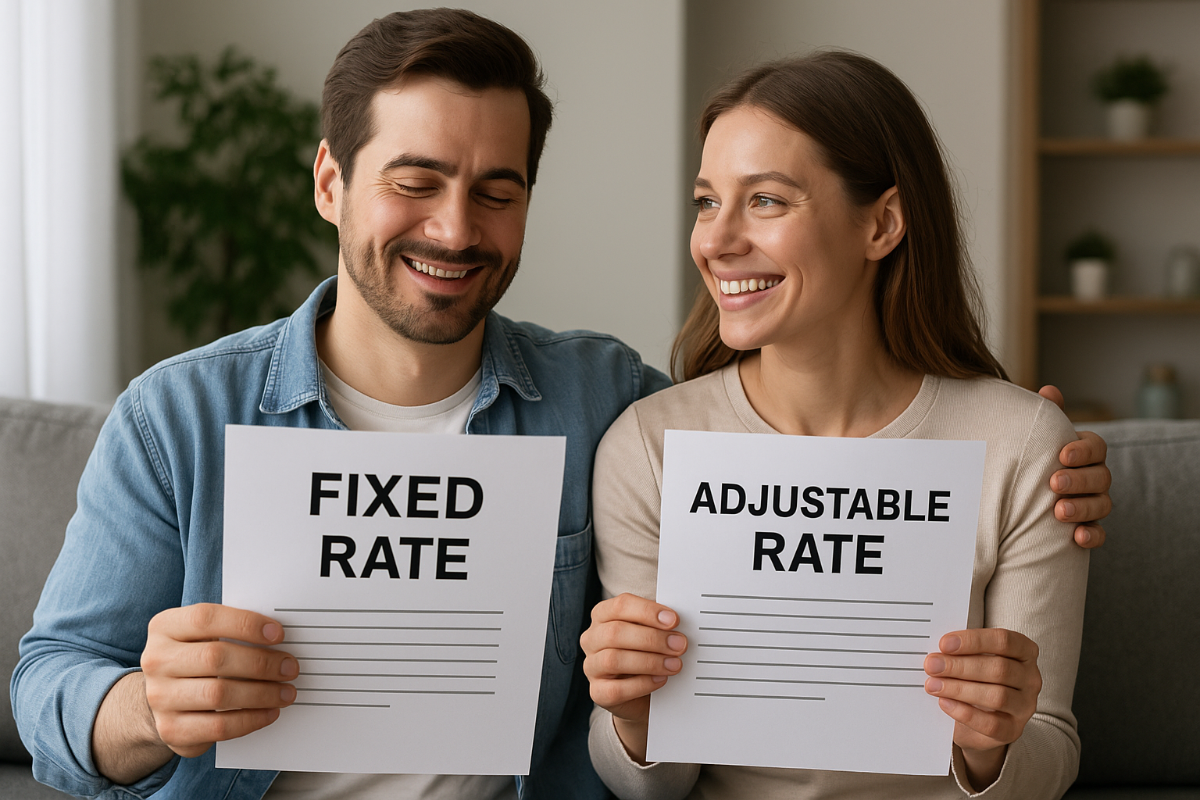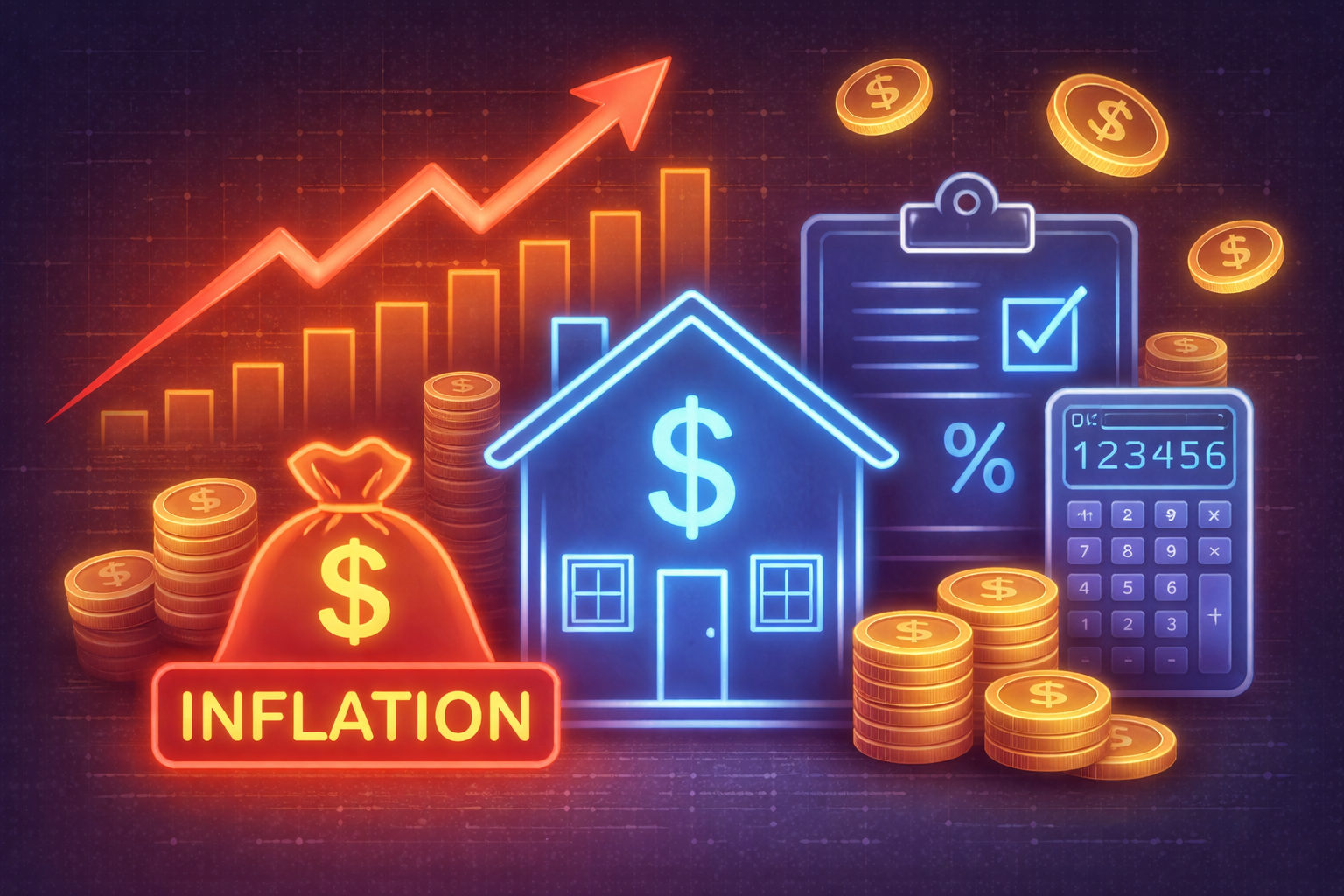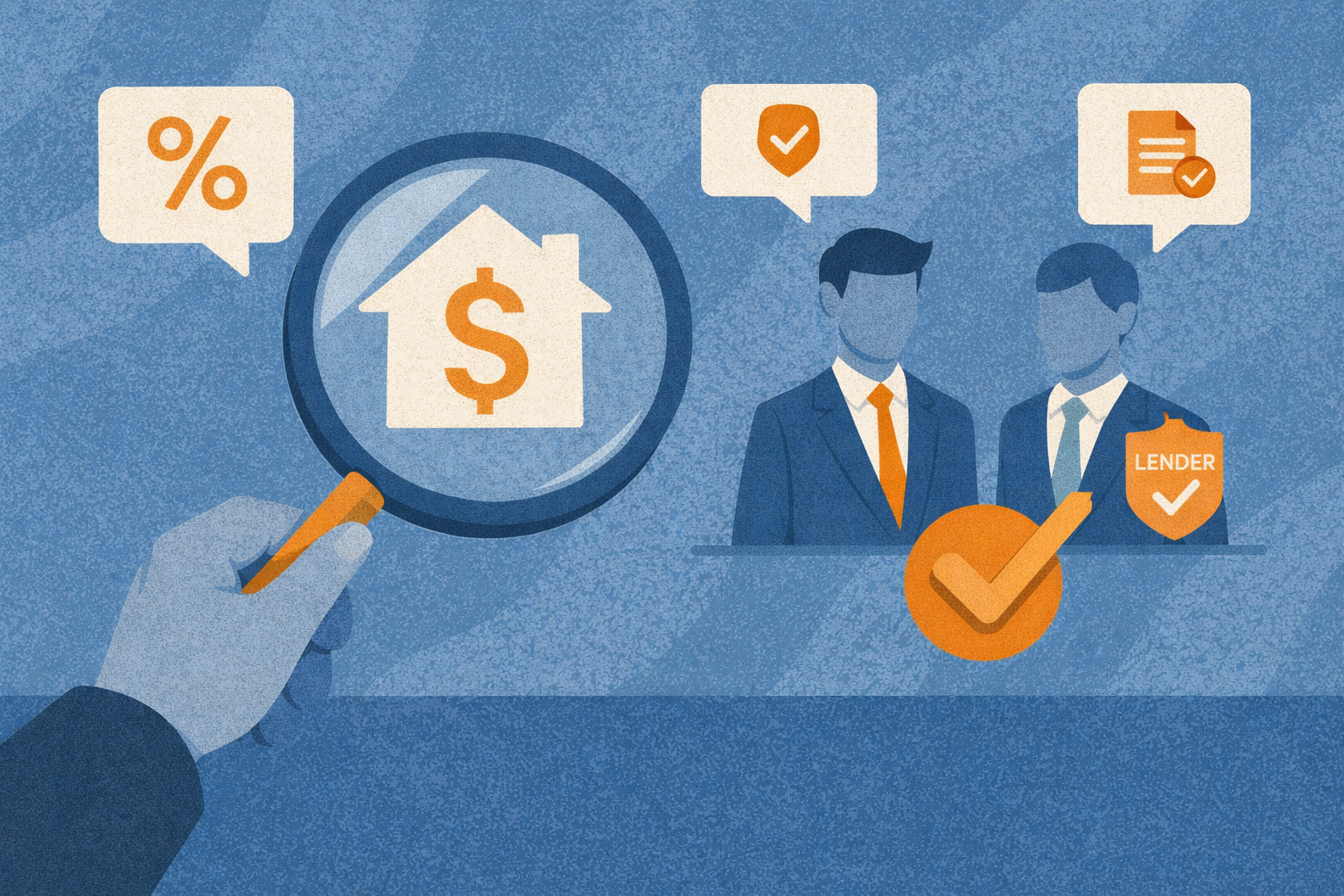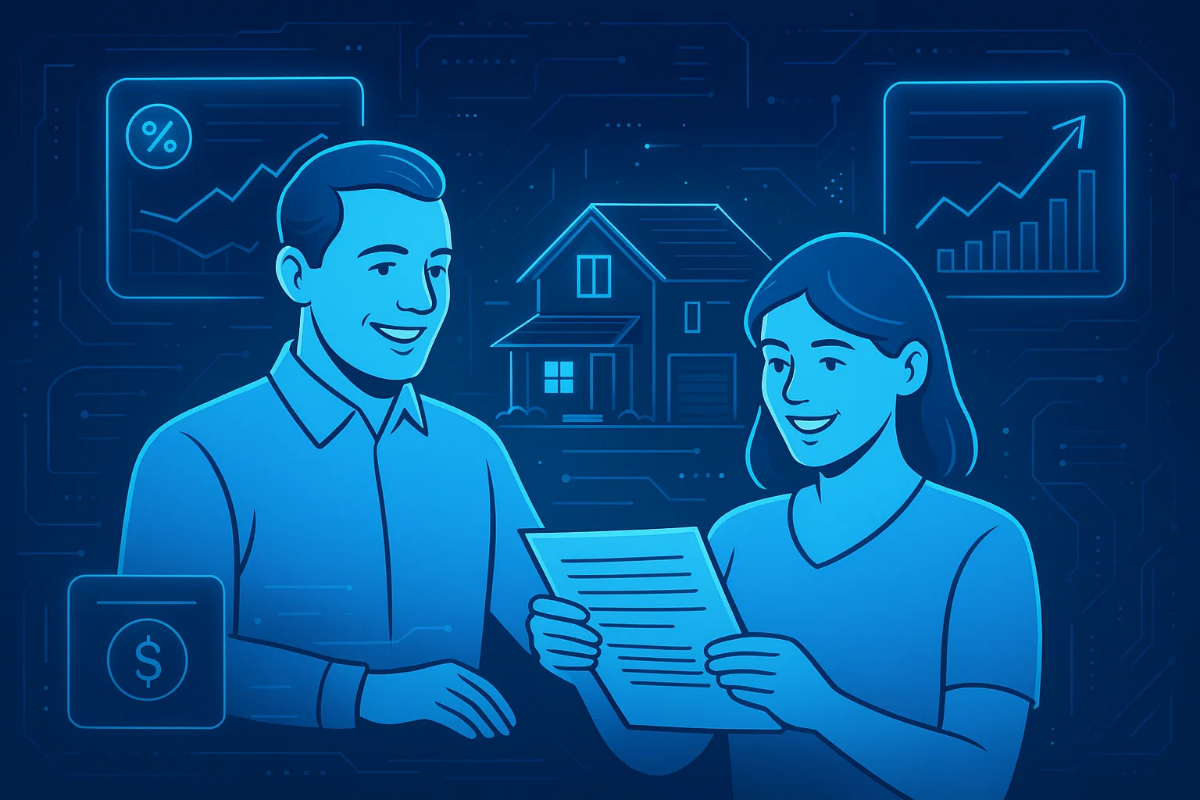Introduction: Understanding Your Mortgage Rate Options
Choosing between a fixed vs adjustable mortgage rate is one of the biggest decisions you’ll make when buying a home. Your mortgage rate determines both your monthly payment and the total amount you’ll pay over decades. The right choice depends on your budget, risk tolerance, and long-term plans. This guide breaks down each mortgage type, explains how they work, and shows real scenarios so you can feel confident in your decision.

What Is a Fixed-Rate Mortgage?
A fixed-rate mortgage is a home loan where the interest rate stays the same for the entire term—typically 15, 20, or 30 years.
How Fixed Rates Work
-
Your rate is locked when you close.
-
Monthly principal and interest never change.
-
Your payment is predictable regardless of economic conditions.
Who Usually Chooses Fixed Rates?
Fixed rates are ideal for:
-
Homebuyers planning to stay long-term.
-
People with a predictable income.
-
Borrowers who prefer financial stability.
-
First-time buyers who want fewer surprises.
Example:
If you borrow $300,000 at a fixed 6.5% rate for 30 years:
-
Your principal + interest payment stays at ~$1,896/month.
-
Even if the Federal Reserve raises rates to 8% or more, your payment never changes.
What Is an Adjustable-Rate Mortgage (ARM)?
An adjustable-rate mortgage (ARM) starts with a lower introductory rate, then adjusts periodically based on a benchmark index such as SOFR.
How ARMs Work
ARMs include:
-
An introductory fixed period (e.g., 5 years in a 5/1 ARM).
-
Adjustment intervals (usually every 6–12 months).
-
Rate caps that limit how much your rate can increase.
Common ARM Types
-
3/1 ARM: Fixed for 3 years, then adjusts annually.
-
5/1 ARM: Fixed for 5 years (the most popular).
-
7/1 ARM: Fixed for 7 years, then adjusts annually.
-
10/1 ARM: Longest fixed period before adjustments.
Example:
A $300,000 5/1 ARM at 5.2%:
-
First 5 years: ~$1,646/month.
-
After year 5: Rate may rise or fall depending on the index + lender margin.
Fixed vs Adjustable Mortgage Rates: Key Differences
Payment Stability
-
Fixed: Completely predictable.
-
Adjustable: Can rise significantly later.
Long-Term Cost
-
Fixed: Higher initial rate but stable.
-
Adjustable: Lower introductory cost but uncertain long-term expense.
Risk Level
-
Fixed: Low risk.
-
Adjustable: Higher risk due to future rate changes.
Flexibility
-
Fixed: Best for long-term homeowners.
-
Adjustable: Best for buyers who plan to move or refinance before the rate adjusts.
Real Market Data: When Rates Matter
Data from the Federal Reserve Bank of St. Louis (FRED) shows that mortgage rates have fluctuated sharply in the past decade—from below 3% in 2021 to over 7% in 2023–2024.
This volatility makes ARMs riskier today, especially during inflationary cycles.
Example Scenario Based on Rate Trends
If rates rise from 5% to 8%:
-
A 5/1 ARM borrower may see their monthly payment increase by $400–$800.
-
A fixed-rate borrower stays unaffected.
Pros and Cons of Fixed-Rate Mortgages
Pros
-
Payment stability for 15–30 years
-
Easier budgeting
-
Strong protection in high-rate environments
-
Best for long-term planning
Cons
-
Higher starting rate
-
May cost more if rates fall substantially
Pros and Cons of Adjustable-Rate Mortgages
Pros
-
Lower introductory rate
-
Good for short-term ownership
-
Potential savings if rates drop
-
Useful for buyers expecting rising income
Cons
-
Monthly payments can rise after the initial period
-
Harder to predict lifetime costs
-
Risk of payment shock
-
Refinancing may not always be possible
How to Choose Between Fixed and Adjustable Rates
Step-by-Step Decision Framework
1. Consider Your Time Horizon
How long will you stay in the home?
-
More than 7–10 years: Choose fixed.
-
Less than 5–7 years: ARM might save money.
2. Evaluate Your Financial Stability
Ask yourself:
-
Is your income stable?
-
Can you handle a $300–$800 payment increase?
If the answer is no, a fixed rate is safer.
3. Watch Federal Reserve Announcements
If the Fed signals rising rates, ARMs may become riskier.
4. Analyze Current Rate Gaps
When the difference between fixed and ARM rates is small (under 0.75%), ARMs offer little advantage.
5. Check Your Credit Score
Lenders like Chase, Rocket Mortgage, and Bank of America offer their best rates to borrowers with 740+ credit.
Every 20 points in your FICO score can change your rate dramatically.
Cost Comparison: Fixed vs ARM Over Time
Below is a simplified cost comparison for a $350,000 loan.
Case 1 — 30-Year Fixed at 6.5%
-
Payment: ~$2,212/month
-
Total interest (30 yrs): ~$446,000
Case 2 — 5/1 ARM at 5.2% (with rising rates)
-
First 5 years: ~$1,928/month
-
Years 6–10 (rate rises to 7%): ~$2,328/month
-
Years 11–30 (rate rises to 8%): ~$2,572/month
If rates climb steadily—as they did in 2022–2023—the ARM borrower pays significantly more over time.
Common Mistakes Homebuyers Make
1. Choosing an ARM without reading adjustment rules
Many buyers misunderstand:
-
Initial adjustment limits
-
Lifetime rate caps
-
Index + margin structure
2. Assuming they will refinance
Refinancing isn't guaranteed.
If home prices drop or credit scores fall, options disappear.
3. Focusing only on the initial payment
The starting ARM rate is attractive—but temporary.
4. Not estimating worst-case payments
Always ask your lender:
-
“What is the maximum possible payment after adjustments?”
5. Ignoring total lifetime cost
Monthly savings now can mean tens of thousands more later.
Practical Tips for Choosing the Right Mortgage
If You’re Considering a Fixed Rate
-
Lock your rate if the Fed is expected to raise rates.
-
Compare rates from at least three lenders.
-
Use mortgage calculators from NerdWallet, Bankrate, or Fannie Mae.
If You’re Considering an ARM
-
Choose a longer fixed period (7/1 or 10/1) for safety.
-
Review the lifetime cap carefully.
-
Ask for scenarios showing rate increases.
-
Plan an exit strategy (sale or refinance).
For All Borrowers
-
Improve your credit score before applying.
-
Avoid large purchases before closing.
-
Keep debt-to-income ratio below 43%.
-
Review all loan disclosures carefully.
Case Study: Which Mortgage Works Best in Real Life?
Example 1 — Young Professional Moving Often
-
Age: 28
-
Job: IT engineer at Oracle
-
Expected job relocation: within 4 years
-
Best choice: 5/1 ARM
She benefits from a lower initial rate and avoids long-term risk.
Example 2 — Family with Kids Staying Long-Term
-
Family of four
-
Buying a suburban home
-
Planning to stay 10+ years
-
Best choice: 30-year fixed rate
Predictability outweighs savings from ARM.
Example 3 — Investor Buying a Rental Property
-
Goal: Positive cash flow
-
Market: High-rent city (e.g., Denver or Austin)
-
Best choice: Depends on cash-flow risk
If rents grow consistently, ARM may work. Otherwise, fixed is safer.
Author’s Insight
After years of studying mortgage trends and helping clients analyze rate structures, I’ve seen one pattern repeat: most buyers underestimate the long-term risk of adjustable mortgages. While ARMs can make sense—especially for relocation-prone professionals or investors—unexpected life events often extend ownership beyond the initial fixed period. In my experience, homeowners who choose fixed-rate loans sleep better at night because they eliminate uncertainty. Rate stability becomes more valuable than temporary savings.
Conclusion
Choosing between a fixed vs adjustable mortgage rate requires understanding your financial goals, risk tolerance, and timeline. A fixed-rate mortgage offers long-term stability and protection, while an ARM provides short-term savings but carries uncertainty. Evaluate your plans, study market trends, and compare scenarios before selecting your loan. The right choice can save you tens of thousands of dollars and ensure financial peace of mind for years to come.





